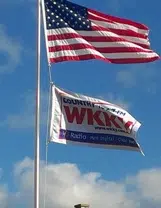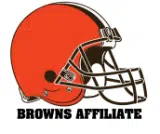We’re off to Indianapolis. We have a lot to cover this week, so let’s get the final takeaways of February rolling …
Marvin Harrison Jr.’s pre-draft plan is one to pay attention to. Ohio State’s reigning Biletnikoff Award–winning receiver hasn’t hired an agent. He also didn’t engage in the pre-combine training that most other players do ahead of Indianapolis. And all signs show Harrison’s plan is to continue working out in Columbus, Ohio with Buckeye strength and conditioning tycoon Mickey Marotti, among others, to prepare not to run a 40-yard dash, but play football in the fall.
Why?
Well, first of all, because he can. After putting up two consecutive 1,200-yard, 14-touchdown seasons to cap off his three years at Ohio State, Harrison has positioned himself to go inside the top five this April. He’s regarded as the best NFL receiver prospect since Julio Jones and A.J. Green in 2011, and maybe the best since Calvin Johnson went second overall in ’07. It’s been assumed now for well over a year that Harrison will be the top receiver in this April’s draft.
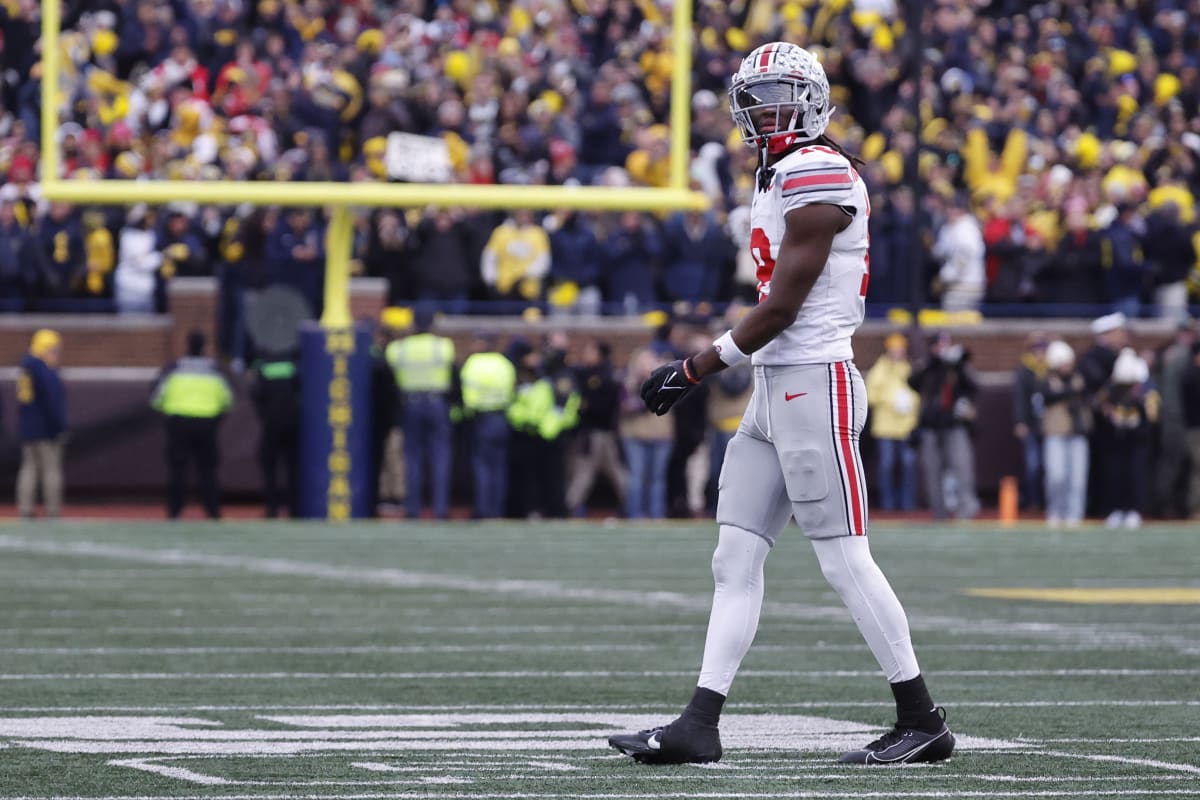
Rick Osentoski/USA TODAY Sports
He can simply tell NFL teams to turn on the tape—how he runs a 40, or a three-cone drill, or routes on air probably won’t change how high he’s going to go. His sterling reputation as a worker and a person also give Harrison even more flexibility here. That allows everyone to view Harrison’s plan as strictly a business decision, made with an eye towards having a great rookie year, rather than as some reflection on his character.
The funny thing is that it’s not all that different from the decisions made by teams, more and more these days, to keep their coaching staffs home from Indianapolis. Those choices are said to be made because the benefit of going is outweighed by the work that can be done by staying home. In this case, Harrison is not quite staying home, but it’s similar in that there’s a greater benefit for a player of his caliber to get ready for the season, rather than for the standardized physical testing that’s been done at the combine and at Pro Days for decades.
Of course, it doesn’t help the NFL (as it tries to turn the combine into entertainment property) that Harrison’s doing things this way, or that his decision could set a trend for elite players going forward. But this way, no one’s spending six figures to get him ready for the combine, as agents often do on the very best prospects, and, really, there’s no reason for a 21-year-old to concern himself with what works for Park Avenue.
We’ll see soon enough what sort of effect this has on the way people talk about the player who was the best receiver in the college game over the last two years. My guess is there won’t be much of one.
With the franchise tag numbers coming in higher than expected, because the cap was set at a higher-than-expected $255.4 million, I think there could be a better market for trades of tagged players. The first of those, Cincinnati Bengals WR Tee Higgins, could be a candidate for a trade. If the Carolina Panthers franchise tag edge rusher Brian Burns, I’d say the same for him.
Yes, the tags are more expensive now. Six positions (QB, WR, OL, DE, DT, LB) now top $20 million, and another one (corner) is right there at $19.801 million. Just two (QB, LB) exceeded that threshold in 2023.
But there’s now also more room for suitors to work with, and because of the leverage the higher numbers create, plus the percentages of the cap used to value contracts jumping as well, it’ll become more difficult for teams to find middle ground with their own tagged players (with whom they’ve already failed to strike a deal).
Consider the two above situations.
• Higgins will be tagged at $21.816 million. That means a second tag for him will come in at $26.179 million in 2025, pushing his two-year cost towards $48 million. So it’s unlikely he would sign a long-term deal at less than $25 million per. That number then becomes the floor for what you’ll pay Ja’Marr Chase, who’s now eligible for a second contract. The question after that becomes whether or not the team can allot, say, $110 million or so per year to a quarterback and two receivers. Maybe the Bengals can. But it wouldn’t be easy.
• Meanwhile, Burns’s tag will land at $24.007 million, if the Panthers choose to use it. That means tagging him again in 2025 will cost $28.808 million. To sign him long-term, the cost would be on the top end of the market for edge rushers—somewhere Carolina hasn’t been willing to go with him, even after turning down two first-rounders and a third-rounder from the Los Angeles Rams at the deadline in ’22. Maybe the ascension of Dan Morgan to GM, and the addition of Brandt Tilis as EVP of football ops, will change the Panthers’ viewpoint. Maybe not.
The above two, of course, play premium positions. They’re both just 25 years old. If their teams aren’t going to sign them long-term, this might be the time to move them. A trade could help the Panthers recoup some of the draft capital lost in last year’s trade for the No. 1 pick, or get back into this year’s first round. It could give the Bengals a chance to chart a sustainable future and find a new, more cost-effective complement to Chase in a receiver-rich draft.
Now, if all things were equal, I think Zac Taylor and Dave Canales would tell you they’d love to have Higgins and Burns aboard long-term. But in cases like these, the best thing may be to do what, say, the Seahawks did by tagging Frank Clark back in 2019, using a really good player to reset a little and allow for more flexibility going forward.
Also, that salary cap isn’t just a little higher than teams expected. To be sure, teams generally work off of conservative estimates for future caps, for obvious reasons. But the numbers I’d heard over the last couple months are dwarfed by the $255.4 million figure teams got Friday. When I checked in on that back in December, I can remember hearing some were working with numbers under $240 million and, really, no one was past (or even at) $245 million.
So obviously this will change things for the NFL’s 32 franchises, as the new league year approaches.
“It’s an enormous difference from what we were all expecting,” says a chief negotiator from an NFC team.
Here’s where a couple people I talked to over the weekend see that difference coming through in the next few weeks.
• It’ll entitle any agent who was, perhaps, looking at different ideas for contract demands to shoot for the moon and draw harder lines, because these deals are always seen as pieces of the larger pie that is the cap. So the bigger the pie, the bigger, theoretically, the pieces.
• It’ll allow for teams facing difficult cap decisions to either kick the can down the road more effectively, or keep a player or two it may have cut on an existing deal.
• It’ll make older players perhaps a bit less willing to take pay cuts, since they’ll know that (a) their teams have more room to compromise, and (b) there’s more money out there to be spent.
And then, there was one specific situation raised to me that could influence some things, too.
The Saints gave Jameis Winston a $100,000 signing bonus to push back the poison pill in his contract to March 16. It was done for salary cap purposes, and it simply means Winston will hit the market later than he otherwise would have. These are normally bookkeeping moves, and Winston certainly had leverage here—he could’ve put the Saints in a bind financially, which prevents them from spreading out his cap penalty.
But in this new environment, will other players ask for money to restructure, if the team’s ability to do so isn’t written into their contracts? Specifically, would Saints players ask for that, given what the team did to entice Winston to help them out? It’s an interesting twist to the otherwise mundane period in which teams are reworking these things to become cap compliant for the new league year.
As college football evolves, the lines between what that game is, and what the NFL is, are becoming increasingly blurred. That much has been clear and obvious, of course, for a while now, with pro football’s influence on its de facto minor league always present. The difference now is the pace at which this is all moving, with the NIL and transfer portal creating a parallel to free agency in the college game.
And if you want a real look at that, as we head into draft season, listen to new Boston College coach Bill O’Brien, who raised it on his own in a sit-down interview with my buddy Pete Thamel a couple weeks ago.
“One of the things I learned at Alabama, and even at Ohio State with Ryan Day in the short time I was there, two weeks, I saw the structure of how they set up their recruiting,” O’Brien said. “There is a general manager-type position. Whether we’ll call him the GM or not, I don’t know yet. But there is a GM. And then there is somebody, hey, this person’s in charge, let’s call it, in pro football, it’d be the college draft; in college football, it’d be high school recruiting. And this person’s in charge of, in pro football free agency, the pro side of things, well, in college football, that’s the portal.
“So we’ll have a structure like that.”
Having that sort of framework in a college program is essential now not just to winning, but also in supporting a coach. It makes their job manageable, and not one they’ll want to run from the first time an NFL team offers so much as a coordinator job. It’s also another step in, again, blurring those lines, which, in a roundabout way, is slowly making the transition for college players to the pros a little easier than it has been.
(We’ve got a little more on that in The MMQB lead this week.)
Eric Bieniemy’s decision to go to UCLA is a window into how the league sees him right now. Obviously, the former NFL running back accomplished a lot of great things in his five years as offensive coordinator in Kansas City—with Patrick Mahomes winning two regular season MVPs and two Super Bowl MVPs as the Chiefs secured two Lombardi Trophies and made it to five AFC title games over that span. But there were questions while he was there that surfaced again in his years as the Washington Commanders offensive coordinator.
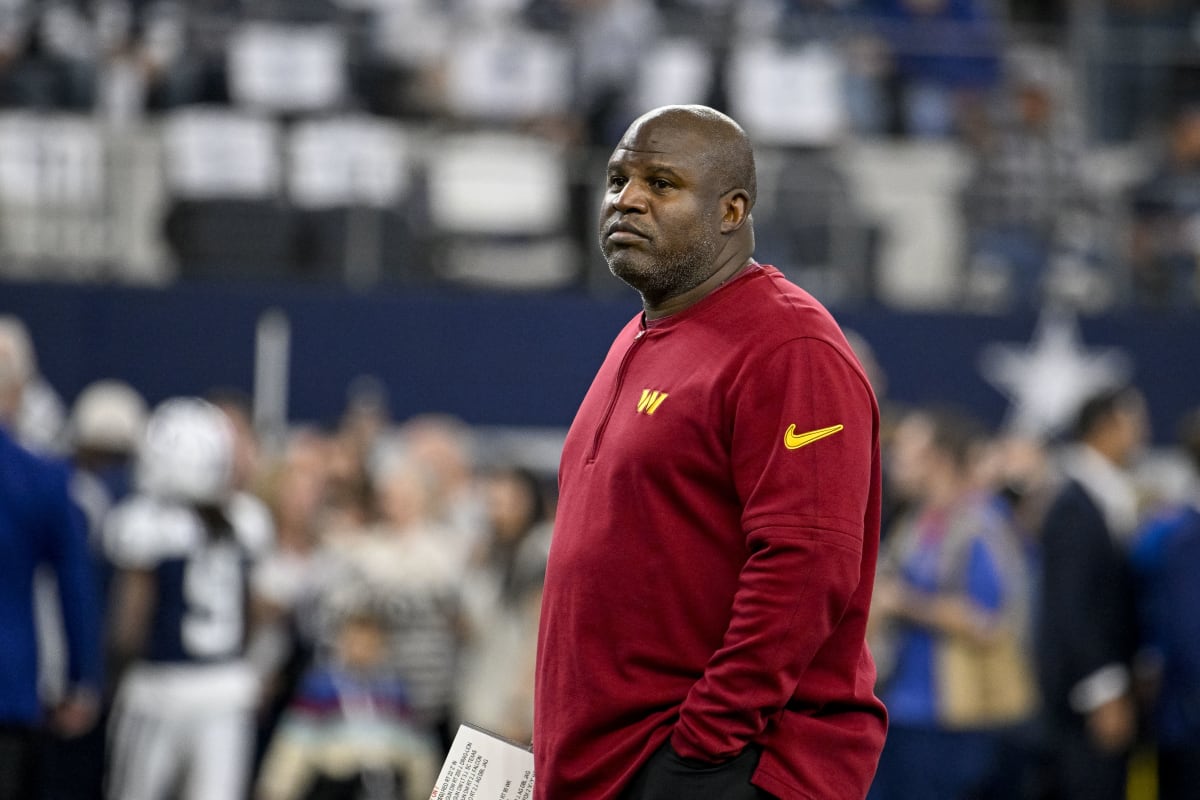
Jerome Miron/USA TODAY Sports
Primarily—and this isn’t news—it was in how decidedly old school Bieniemy was with the players, which is something that I actually respect. He never really changed the way he did things. He didn’t give special treatment to star players, and he was tough on everyone, both from an hours standpoint and in what he would ask of the people in the huddle. Bieniemy could also be a bit stubborn in how he copy and pasted Andy Reid’s offense (based to feature the tight end) in Washington. And the coordinator was not as forthcoming with the why behind his scheme, which is something players now often want.
From an in-game standpoint, there was also how quickly Bieniemy would stray from the game plan when the Commanders fell behind, something that would frustrate players and coaches alike—with the offense sometimes running sovereign to the rest of the operation.
All of this is part of what followed Bieniemy, from a reputation standpoint, into the offseason. Some believed it would lead him back to Kansas City, perhaps in some sort of senior role. But that may have been a bit awkward, and this, honestly, might be what’s best for Bieniemy’s career anyway. If he shows he can get the most out of players at UCLA, like he has at previous points of his career, and with a younger lot than he was dealing with in the NFL, I could see that changing his trajectory back in the pros.
Either way, there’s definitely a lesson here on how public perception doesn’t always match the way people are looked at within the ranks of these teams.
While we’re there, it’ll be interesting to see how Vic Fangio meshes with the Philadelphia Eagles defensive personnel, in light of more residue from Miami spilling out. I wrote a few weeks back that there was friction between the well-regarded defensive coordinator and his Dolphins players—to the point where some players were freelancing late in the season, believing the way the defense was being called wasn’t right for them.
Well, in the aftermath of Xavien Howard’s release, Jalen Ramsey basically confirmed it, writing on X, “I won’t ever forgive dude for not utilizing our full skill set” in a goodbye post for Howard that didn’t name Fangio, but clearly referenced him.
So now, Fangio will be joining an Eagles defense stocked with veteran players—some of whom will be back, and some of whom won’t—and one in particular who got one of Fangio’s disciples, Sean Desai, demoted during the season, then fired after it. What could this mean for players such as Darius Slay, James Bradberry, Fletcher Cox or Brandon Graham, who might have pretty strong feelings on how the defense should be constructed?
It’ll be fascinating to find out, especially with a version of Fangio that might be motivated to dispel some of the notions surrounding him going into this job.
One thing that’s interesting about the free agent market is that a few of the top names out there will be third contract players. Among them are Vikings QB Kirk Cousins, Chiefs DT Chris Jones, Vikings DE Danielle Hunter and Bucs WR Mike Evans. All are guys who, for various reasons, are unlikely to be tagged. (Hunter is the only one who actually has a no-tag clause written into his contract.)
So what’s their value? It might be more than you think, even at their advanced ages.
The late-era dynasty New England Patriots and the Baltimore Ravens of the past few years have feasted on these types of players, with the feeling being that, despite the risk of taking on older people, there’s a level of certainty you get with a player who’s made his money and has a longer track record. Plus there’s the benefit of the leadership that comes with signing one of them. Among those in that category for this year’s Baltimore team: Odell Beckham Jr., Kevin Zeitler, Michael Pierce, Kyle Van Noy, Jadeveon Clowney and Ronald Darby.
As that list would indicate, teams usually won’t have to pay the premium they would for a guy in his mid-20s, and there’s still a level of production that they can count on. Maybe now the Ravens set an example that brings the league to the point where it has to pay a little more for those sorts of players.
I thought new Los Angeles Chargers OC Greg Roman’s comments on Justin Herbert this week were great. And mostly because they indicated Roman doesn’t plan to put the weight of the world on the fifth-year quarterback’s shoulders in his first year playing for Jim Harbaugh.
“I think in this league, you can really, really help dictate the defenses if you have a strong running attack,” Roman said. “If you really talk to most defensive coordinators in this league and get them off to the side when they’re playing a really good running team, they’re sweating a little bit. They’re sleeping a little less that week.”
The OC then added, “Can you imagine Justin Herbert with a great running game?”
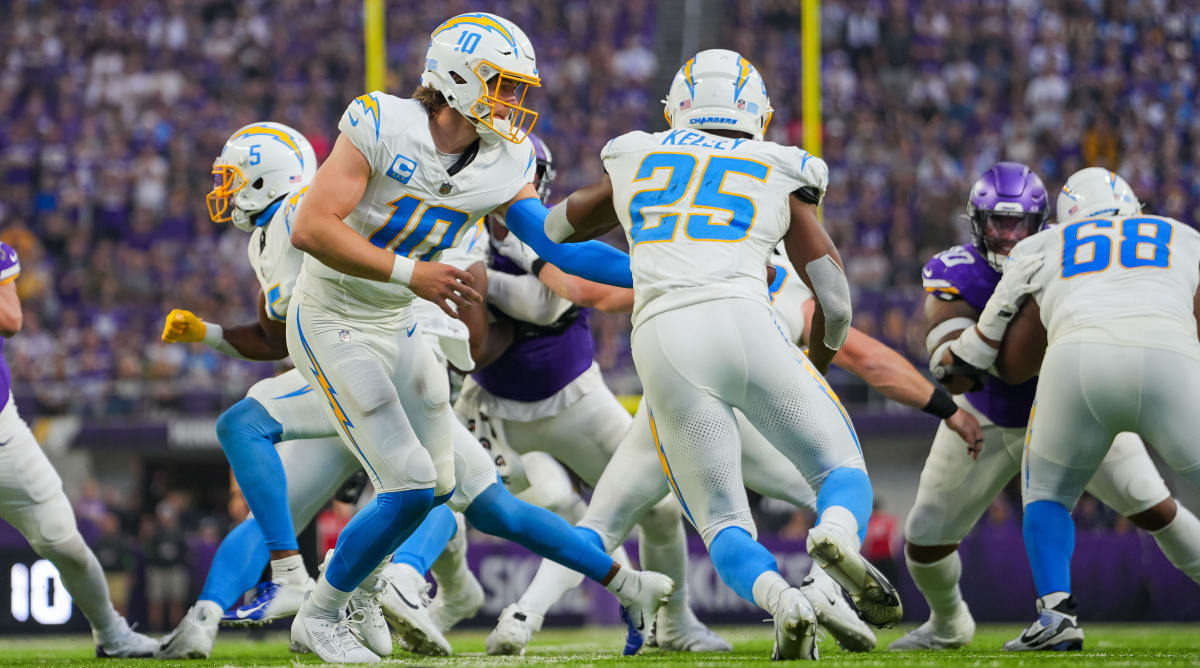
Brad Rempel/USA TODAY Sports
To be fair, the Chargers have been inconsistent, but not flat-out bad, running the ball over Herbert’s first four seasons. They ranked ninth among 32 teams when he was a rookie, 21st in his second year, ninth again in 2022, and 25th last year. Still, it’s not the top-three rushing attack Lamar Jackson had in each of his first four years, or the top-10 run game Josh Allen had in three of his first four years. And since Roman was behind that run game that Jackson rode in Baltimore, there’s good evidence that’s where the OC and Harbaugh are taking things.
Want more evidence? In Harbaugh and Roman’s four years in San Francisco, the 49ers ranked eighth, fourth, third and fourth running the ball, which played a huge part in resurrecting Alex Smith’s career, and then getting Colin Kaepernick’s off the ground.
The bottom line is this: If these two coaches can do what they’ve done everywhere else, Herbert’s life is about to get a lot easier, with more second-and-6s and third-and-2s, and defenses unable to get complicated with him on the other side. And given what the Chargers have around Herbert in the throw game, plus what Jesse Minter can bring to a talented defense, you can see where this could get pretty fun pretty quick for Los Angeles.
It would add up to Harbaugh having a very real shot at the kind of accelerated retooling he oversaw in getting the Niners to the NFC title game in his first year there.
I loved Pro Football Talk’s take that coaches should get paid more—but probably won’t. And I agree with Mike Florio on this. A great head coach might be second to a great quarterback in the advantage he gives the franchise that employs him.
Yet owners have created an environment where the public seems stunned to hear a coach is making eight figures. Want some context on that? Here’s a list of players at the $10 million APY (average per year) mark: Taysom Hill, Marquez Valdes-Scantling, Russell Gage, De’Vondre Campbell, Sam Hubbard, Amani Hooker, B.J. Hill, D.J. Jones, Foley Fatukasi, Michael Thomas after all his injuries, and Fletcher Cox at 33 years.
All due respect to those players, but if someone wants to make the argument that a good head coach isn’t worth what a player on that list is, I’d love to hear it.
That said, there is, as Florio referenced, some chicanery that happens in this department by teams too. One story I’ve had verified was that of a high-profile head coach who got a percentage of his money in a base salary (that is what’s reported to the league office, where it goes into a database that few folks have access to) and the rest would be funneled into an LLC, so the owner wouldn’t get heat from his peers on what the coach was making.
So, yeah, you can make of that what you will. These people obviously didn’t become billionaires for no reason.
Here are our quick-hitting takeaways heading into the week in Indianapolis. Right here, right now …
• The rising cap numbers and escalating tag numbers are a good reminder that it almost always makes sense to do a new deal with a franchise player—a true franchise player—a year early.
• So if I’m the Jacksonville Jaguars (Trevor Lawrence), Bengals (Chase), Detroit Lions (Penei Sewell), Denver Broncos (Patrick Surtain II), or Cowboys (Micah Parsons), I’m getting cracking on extending my first-rounder from three years ago, even with two years left on each of their deals.
• I don’t know why the Commanders would trade Sam Howell without getting something significant back for him, even with the likelihood they take a quarterback at No. 2 in April. Having depth at the quarterback position, at Howell’s price, is too valuable.
• Desai makes sense as an add for the Rams, given his background in the Fangio scheme that the team has been running since hiring Brandon Staley as defensive coordinator in 2020.
• I saw Adrian Peterson at the Super Bowl, and he certainly looks like he could still play.
• Given all the noise around the Eagles, the arranged marriages between coordinators Kellen Moore, Fangio and head coach Nick Sirianni are going to be interesting. I’d argue one of the real strengths of Philadelphia’s 2022 Super Bowl team was the staff chemistry. We’ll see if the Eagles can find a way to recreate that this year.
• I love the hire of John “Stretch” Streicher as Rams game management coordinator. He was Mike Vrabel’s right-hand man for the last six years in Tennessee, and there were few better in the area of manipulating the broadcast context and rules of a game than Vrabel’s Titans. Streicher stands to give Sean McVay a new edge, for sure.
• I also love that it’s another display of McVay’s humility. Last year, we saw it as he reached outside the coaching tree to add Patriot-bred Nick Caley and Ryan Wendell to his offensive staff. This year, it’s McVay delegating to try and cover up what he might miss while calling plays.
• Jones will get a lot of attention, and rightfully so, among the Chiefs’ free agents. But L’Jarius Sneed was nearly as big a part of that defense’s success last year. Teams will have to dig through his health a little, but he played really, really well last year.
• With the Bengals’ decision to swap out their surface this year, the NFL now has zero slit-film turf fields left. So after defending the use of those for a while, the league can now pivot to take credit for phasing them out of pro football.






